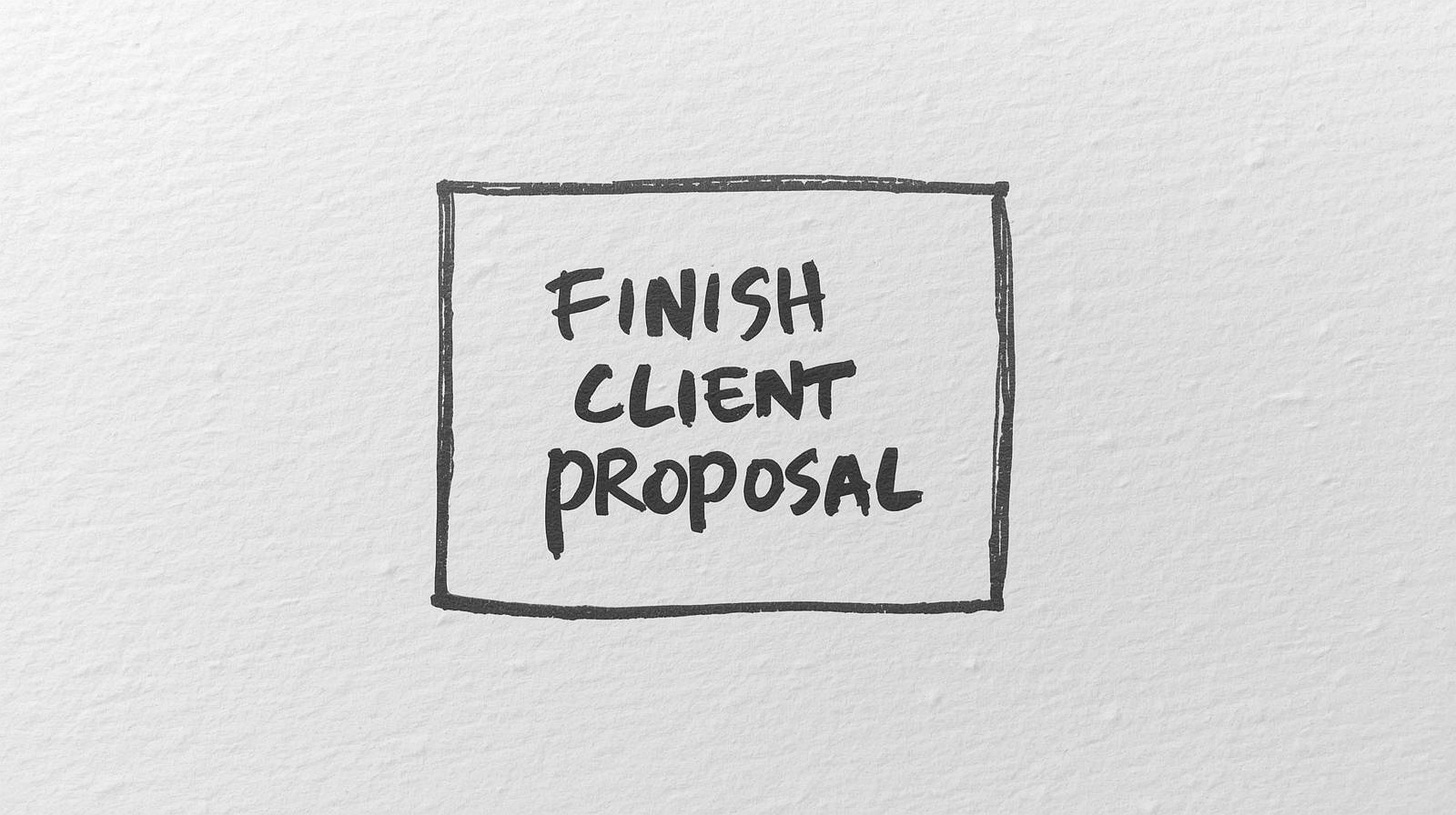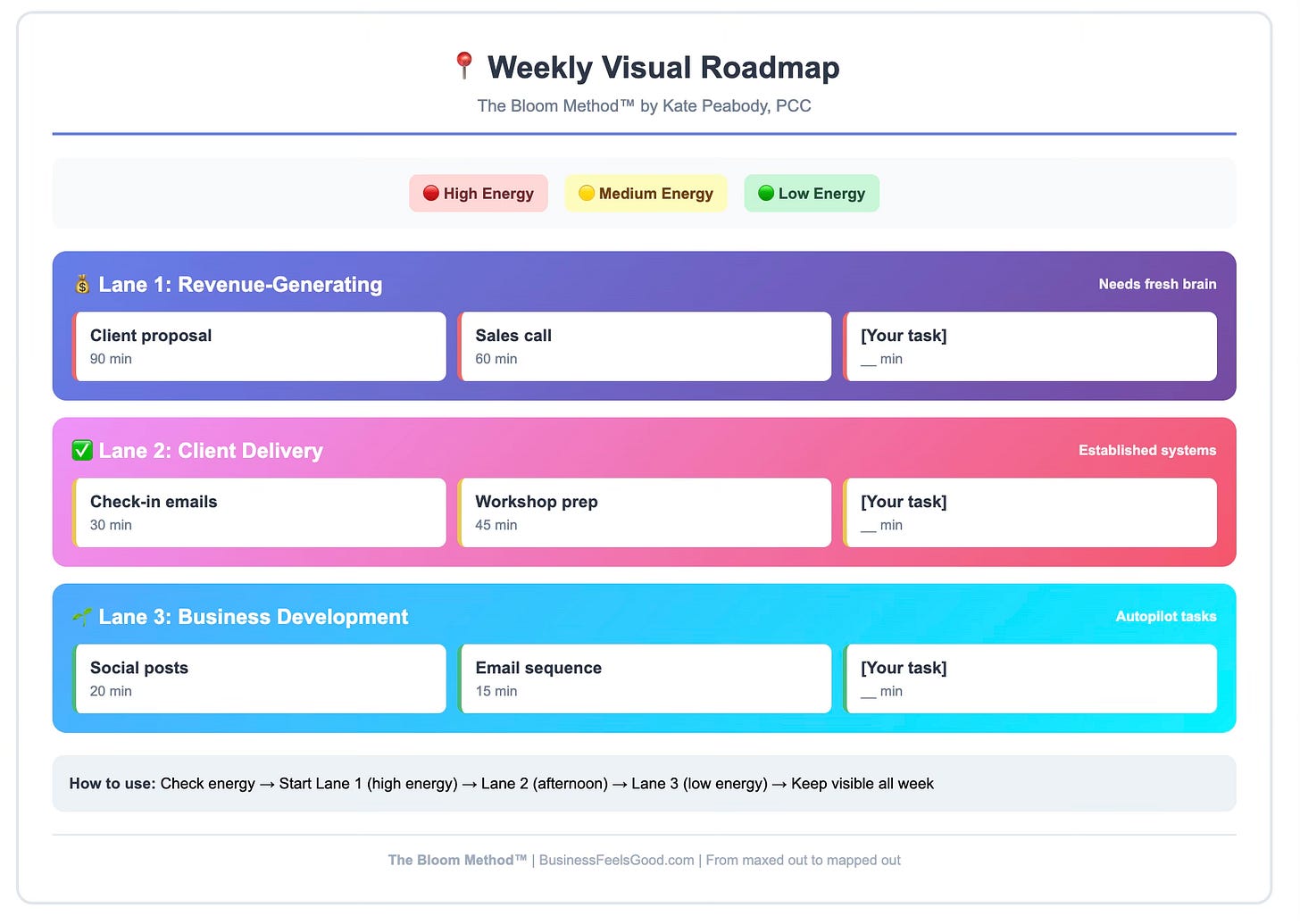Your ADHD isn't the problem. Your Gantt chart is.
How visual planning saved my ADHD brain (and my business)
I was 45 minutes into my Monday morning planning session when I realized I’d forgotten what I was planning.
Again.
The spreadsheet stared back at me. Twenty-three color-coded rows. Dependencies mapped. Milestones flagged. A beautiful, logical, totally overwhelming disaster.
My executive function had left the building.
This was supposed to be the answer. If I just plan better, I’ll execute better. That’s what all the business books said. That’s what my neurotypical business coach recommended.
So I tried harder.
I bought the productivity planner. Downloaded the project management software. Set up the weekly review ritual. Blocked my calendar into 15-minute increments.
The result?
I spent more time planning than doing. My brain felt like a browser with 100 tabs open. And my business? Stuck.
🧠 The Day Everything Changed
It was a Tuesday. I had a migraine. My carefully constructed weekly plan sat untouched on my desk.
So I grabbed a piece of paper and drew a box.
Inside the box: “Finish client proposal.”
That’s it. One box. One goal. Visual. Simple. Clear.
I finished the proposal in 90 minutes.
Then I drew another box: “Send three follow-up emails.”
Done by lunch.
By end of day, I’d completed more than I had all week.
My ADHD brain didn’t need a better system. It needed a different system.
📊 What the Science Says
Here’s what I learned: The human brain processes visual information significantly faster than text and for ADHD brains, visual cues provide crucial external scaffolding for executive function.
We’re not bad at planning. We’re just not the greatest at linear planning.
The neurotypical planning model assumes:
You can hold multiple steps in working memory
You’ll remember the plan without visual cues
Sequential thinking comes naturally
Future-focused motivation works
But ADHD brains work differently:
Working memory effectively holds 2-4 items at once (research shows 30-40% lower capacity)
We need visual anchors to remember anything
We think in networks, not sequences
We need NOW motivation, not future rewards
Traditional planning isn’t broken. It’s just built for a different operating system.
✨The Bloom Method™
After that Tuesday breakthrough, I spent months that turned into several years experimenting.
I didn’t throw everything out. I made it visual.
What I transformed:
❌ Text-heavy project plans → ✅ Visual milestone roadmaps
❌ Written weekly review templates → ✅ One-page reflection canvas
❌ Rigid time-blocking calendars → ✅ Energy-based scheduling
❌ Abstract priority lists → ✅ Spatial swimlane planning
The breakthrough wasn’t abandoning structure. It was translating it into a language my ADHD brain could actually use.
I kept the milestones. I kept the planning. I just made it all visible.
That became The Bloom Method™:
✅ One-page visual roadmaps
✅ Swimlane planning (3 lanes max)
✅ Color-coded energy mapping
✅ The “Box Method” for daily wins
Before visual planning: Constant overwhelm, three autoimmune flare-ups, couldn’t sustain client work.
After visual planning: Consistent client delivery, protected nervous system capacity, business I can actually maintain.
The win wasn’t just doing more. It was being able to show up at all.
🎨 How Visual Planning Actually Works
Instead of a to-do list with 47 items, I use a visual canvas with three swimlanes:
Lane 1: Revenue-generating (top priority, needs fresh brain energy)
Lane 2: Client delivery (medium energy, established systems)
Lane 3: Business development (low energy, can do on autopilot)
Each task gets a box. Each box gets a color based on my energy level that day.
🔴 Red = high energy task, tackle first thing
🟡 Yellow = medium energy, afternoon work
🟢 Green = low energy, autopilot or delegate
The magic? I can see my entire week on one page. My brain doesn’t have to remember the plan, it just has to see it.
No more forgetting. No more decision fatigue. No more “what was I supposed to do today?”
💡 The Three Shifts That Changed Everything
Shift 1: From Linear to Spatial
I stopped writing lists top-to-bottom. I started mapping projects left-to-right across a canvas.
My ADHD brain could finally see the relationships between tasks, not just the sequence.
Shift 2: From Future-Focus to Present-Anchor
I stopped planning “what I’ll do next week.” I started asking “what does my nervous system have capacity for today?“
Energy-based planning beats time-based planning every time.
Shift 3: From Memory to Visual Cues
I stopped trusting my brain to remember anything. I created visual anchors everywhere - desk, phone wallpaper, project boards.
If I can’t see it, it doesn’t exist. So I made everything visible.
📈 What Changed (And What It Meant)
Traditional Planning Era:
Completed projects: 2-3 per quarter (inconsistent)
Autoimmune flare-ups: Daily
Client retention: Struggled to maintain relationships
Felt capable: Maybe 40% of the time
Visual Planning Era:
Completed projects: 6-8 per quarter (sustainable)
Autoimmune flare-ups: Reduced 60% throughout the day
Client retention: 89% (they stay because I can show up consistently)
Felt capable: 75% of the time
What changed wasn’t my discipline. It was my system.
The system was finally built for how my brain actually works, not how someone told me it should work.
When you have ADHD and health challenges, sustainability isn’t optional. It’s everything.
🗺️ Your ADHD Brain Needs This
You don’t need another productivity hack.
You don’t need to “try harder” at linear planning.
You need a planning system designed for visual processing, flexible thinking, and energy-based execution.
That’s exactly what the Bloom Method™ provides:
Visual roadmaps that protect your working memory
Energy-first planning that respects your nervous system
ADHD-friendly frameworks that actually stick
Stop fighting your brain. Start designing around it.
💬 Food for thought
What planning method have you been forcing yourself to use that just... doesn’t work?
When you think about your ideal planning system, what does it look like?
If you could plan based on your actual energy (not an idealized schedule), what would change?
🎯 Next Steps
1. Take the Business Health Reset™ Quiz
Discover your specific ADHD business style and get a personalized visual planning starter kit.
→ Take the 10-minute quiz here
2. Try the Box Method tomorrow
Draw one box. Write one task. Complete it. Draw another box. Build momentum.
3. Download the One-Page Visual Roadmap Template
Stop planning in lists. Start planning in space. Your brain will thank you.
→ Get the free template
Your ADHD isn’t the problem. Your Gantt chart is. Visual planning isn’t a compromise, it’s an advantage. And the business you build when you stop fighting your brain? That’s the one that finally feels good. 😊
Related readings:
Share this if: You know someone who’s been told they “just need to plan better” 🙄
With gratitude + strategy, -Kate






